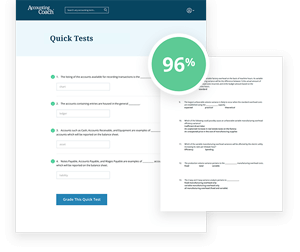For multiple-choice and true/false questions, simply press or click on what you think is the correct answer. For fill-in-the-blank questions, press or click on the blank space provided.
If you have difficulty answering the following questions, read our In-Depth Explanation for this topic.
True
False
True
False
True
False
True
False
True
False
True
False
True
False
True
False
True
False
True
False
True
False
True
False
True
False
True
False
$10
$13
$14
10,000
14,000
20,000
14,000
18,200
26,000
30%
70%
Cannot Be Determined
$77,000
$110,000
$256,667
$112,000
$145,000
$373,333

Get Our Premium Break-even Point Test Questions When You Join PRO
Receive instant access to our entire collection of premium materials, including our 1,800+ test questions.
View All PRO FeaturesFeatures
Free
PRO
Read 3,034 Testimonials